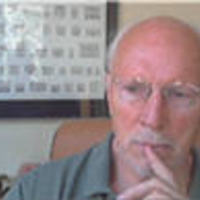
Eric Britton
to follow
Phone: +33650880787
Address: 9 rue Gabillot, 69003 Lyon
Phone: +33650880787
Address: 9 rue Gabillot, 69003 Lyon
less
Related Authors
Jasper J van der Kemp
Vrije Universiteit Amsterdam
John Barry
Queen's University Belfast
Luis Corchon
Universidad Carlos III de Madrid
Benjamin Isakhan
Deakin University
David Seamon
Kansas State University
Armando Marques-Guedes
UNL - New University of Lisbon
Galit Wellner
Holon Institute of Technology, HIT
Simon Springer
The University of Newcastle
Steven Slaughter
Deakin University
InterestsView All (9)



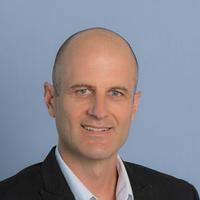

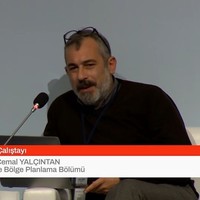

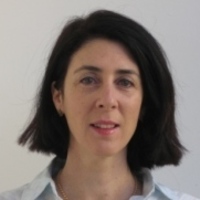
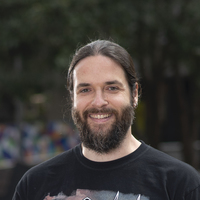

Uploads
Papers by Eric Britton
And if it or something much like it does not exist, I would now like to see if we can encourage the development of such a creative civil society consumer partnership for Penang. (You have to start somewhere.)
Extensive background information exists on our work to support sustainable development and social justice in the transport sector in Penang is available for first time readers.
Whereas Car Free Days have been organized in cities around the world all over the year for the last two decades, there is inevitably a spate of high activity in the month of September, much of it the result of the European Commission’s continuing commitment to both the concept of Car Free Days and their own European Mobility Week. And each year we here at World Streets dig into our archives and dust off one or two of the classics as a timely reminder of the fact that the Car Free Day concept has been around and doing its bit since the first international announcement and challenge was made in Toledo Spain on 19 October 1994.
velib-guyWhy do we bother to do this year after year? After all, there is copious documentation and background available at a click, as a quick tour of Google of those three little words yields somewhat more than 55,000 entries, including a fair if distinctly uneven introduction in the Wikipedia article https://en.wikipedia.org/wiki/Car-Free_Days. The problem is that most of this material seriously misses the point, and as a result often handicaps cities and groups wishing to organize a Day (a week or month close) to underestimate potential of this approach. The trick is that all of this is quite a simple as it may at first glance appear.
carried out in a Third World mega-city, “Sin mi carro en Bogota? Imaginemos una Nueva Ciudad”. The
painstakingly prepared local event involved creating a ban on car traffic during 13 hours and for the entire
(and very large) urban area which served to keep some 850,000 vehicles off the city streets. T
* This city of 7 million went about its business as usual on Thursday, 24 February 2000 – with exception that between 06:30 and 19:30 an estimated 850,000 private cars stayed at home.
People got around on the 24th by a combination of walking, skating, running, cycle, other two-wheel
transport, and public transport, including 55,000 taxis and around 25,000 small buses (colectivos). More than 250 km. of special paths were reserved for bicycle use on the day.
* One month of planning, consultation, preparations and media campaigns carried out to prepare Car Free
Day, under direction of Office of Mayor, with cooperation of all concerned local, regional and national organizations. (Some fine tuning required during the day to adjust for specific problems as they occurred.)
* In recognition of its supporting role in this success, on 5 June 2000 Eric Britton of EcoPlan was awarded the prestigious Stockholm Environment Prize (http://www.challenge.stockholm.se/), which
was shared with the mayor Enrique Peñalosa and the people of Bogotá in a moving ceremony in the famous Blue Hall of the city (where each year the Nobel Prizes are awarded).
(For details see Thursday: – A Breakthrough Strategy for Reducing Car Dependence in Cities). The Car Free Day planning and implementation approach we set out back in 1994 proposed two things. It offered both (a) a sketch plan for discussing and then organizing a Car Free Day -- and (b) the rudiments of an exploratory toolkit which is intended to help people and policy makers in a place improve their understanding of and readiness for a strategy of prudent, effective traffic reductions. This approach is intended to help those who are concerned with these issues in moving that critical step from the abstract and perhaps desirable, to the concrete and practical. You can see all the detail on this in the original Thursday report. The keys to the approach set out in the original documents are careful preparation, broad local participation, discussion and negotiation, test implementation, performance monitoring, reflection, and negotiated follow-up and extension.
A Thursday car free demonstration has to be planned and undertaken with strong local support at the specific city or neighborhood level. It directly addresses the complex challenge of how to make our cites more accessible (which is vital for the local economy), while at the same time improving the quality of life for all who live, work and play there.
This is the second time since World Transport first saw the light of day in 1995 that John Whitelegg and our colleagues have agreed to let me do a “simple” special issue on a transportation/environment topic of burning public interest (the first being our 1996 report with the European Commission on “The Information Society and Sustainable Development”). And it is the second time that I have gone into something like this with my eyes wide shut.
And the time was right for someone – why not us? – to step back in take a good look at what was going on in this rather unexpected way of owning and using cars that was breaking the pattern to which we had all become so thoroughly, so docility accustomed over the course of the 20th century that it seemed to most of the world anyway almost futile to question. The pattern was well-established, as you move up the social and economic ladder at one point it is time to buy your car, followed shortly by the decision to live and even work in a different place. In other words your car was not only a matter of transportation but it was also a matter of transformation – and transformation of your very life. The trick in this case is that for most of us the transformation was entirely invisible.
So carsharing it was to be. The original plan more than a year ago was for a so-called double issue, not quite a hundred pages on our topic supplied by myself and a handful of co-authors. Now that sounded like a reasonably manageable concept, so one says yes and digs in. But it did not take long for reality to rear its ugly head. And the reality is that this is a report and policy guide on projects that span several continents, different languages, technologies, approaches, and cultures, which means if one really wishes to get into it in a useful way the numbers quickly begin to add up. So here we are in late September 1999 with a full year of work behind us, three dozen co-authors, an incredible review process, and some 300 pages of varied and infesting materials that make this, for now at least, the leading world survey of this most interesting area of technology and society.
couple crossing street in Penang trafficTo get a feel for this transformative learning reality let's start with a quick look at a first lot of ideas for Slow Street Architecture as a major means for reducing traffic related nuisances, accident prevention and improving quality of life for all. These approaches are not just "nice ideas". They have proven their merit and effectiveness in hundreds of cities around the world. There is no good reason that they cannot do the same in Penang. Starting tomorrow morning.
choices. The received wisdom is that the user, when bit by the urge to travel and before making a final
commitment to his car, first scans the range of available alternatives and, should any of these become
attractive enough (or should his preferred historical choice become inconvenient enough), switch over to another mode of behavior. But after years of experience and observation (including of my own very ordinary case), it can safely be said that this is patently not true. Quite another process is involved, including one tremendous discontinuity.
journal. It is dedicated to the memory of Louise
Darracott Britton who died in Amory, Mississippi
(USA) in October, 2000. Louise was the mother of one of
our editors, Eric Britton, and led a long, active and
healthy life until Parkinson’s Disease slowly
deprived her of independence and the means to live a
full life.
This journal has always taken a clear line on the
need for a human-centred conceptualisation of
transport. One of the key trends that has grown in
strength during the long period of Louise’s life is the
development of motorisation and high levels of
mobility. Whilst for some people this has produced a
dazzling array of destinations and travel
opportunities within a couple of hours driving time, for
others it has produced a sterile and machine
dominated world that reduces travel opportunities and
accentuates isolation. A child in the 1950s had far
more freedom and independent mobility than a child
has in 2002. For the elderly and those with mobility
problems the situation is much worse than it is for
children. A child is deprived of independent mobility
and freedom (see M. Hillman, J. Adams &
J. Whitelegg, (1990) One False Move: a study of
children’s independent mobility Policy Studies
Institute, London) but still has one or two parents who
will go to quite extraordinary lengths to ferry them
around, arrange visits and ensure that social networks
are as rich as geography, time and cash can permit.
And if it or something much like it does not exist, I would now like to see if we can encourage the development of such a creative civil society consumer partnership for Penang. (You have to start somewhere.)
Extensive background information exists on our work to support sustainable development and social justice in the transport sector in Penang is available for first time readers.
Whereas Car Free Days have been organized in cities around the world all over the year for the last two decades, there is inevitably a spate of high activity in the month of September, much of it the result of the European Commission’s continuing commitment to both the concept of Car Free Days and their own European Mobility Week. And each year we here at World Streets dig into our archives and dust off one or two of the classics as a timely reminder of the fact that the Car Free Day concept has been around and doing its bit since the first international announcement and challenge was made in Toledo Spain on 19 October 1994.
velib-guyWhy do we bother to do this year after year? After all, there is copious documentation and background available at a click, as a quick tour of Google of those three little words yields somewhat more than 55,000 entries, including a fair if distinctly uneven introduction in the Wikipedia article https://en.wikipedia.org/wiki/Car-Free_Days. The problem is that most of this material seriously misses the point, and as a result often handicaps cities and groups wishing to organize a Day (a week or month close) to underestimate potential of this approach. The trick is that all of this is quite a simple as it may at first glance appear.
carried out in a Third World mega-city, “Sin mi carro en Bogota? Imaginemos una Nueva Ciudad”. The
painstakingly prepared local event involved creating a ban on car traffic during 13 hours and for the entire
(and very large) urban area which served to keep some 850,000 vehicles off the city streets. T
* This city of 7 million went about its business as usual on Thursday, 24 February 2000 – with exception that between 06:30 and 19:30 an estimated 850,000 private cars stayed at home.
People got around on the 24th by a combination of walking, skating, running, cycle, other two-wheel
transport, and public transport, including 55,000 taxis and around 25,000 small buses (colectivos). More than 250 km. of special paths were reserved for bicycle use on the day.
* One month of planning, consultation, preparations and media campaigns carried out to prepare Car Free
Day, under direction of Office of Mayor, with cooperation of all concerned local, regional and national organizations. (Some fine tuning required during the day to adjust for specific problems as they occurred.)
* In recognition of its supporting role in this success, on 5 June 2000 Eric Britton of EcoPlan was awarded the prestigious Stockholm Environment Prize (http://www.challenge.stockholm.se/), which
was shared with the mayor Enrique Peñalosa and the people of Bogotá in a moving ceremony in the famous Blue Hall of the city (where each year the Nobel Prizes are awarded).
(For details see Thursday: – A Breakthrough Strategy for Reducing Car Dependence in Cities). The Car Free Day planning and implementation approach we set out back in 1994 proposed two things. It offered both (a) a sketch plan for discussing and then organizing a Car Free Day -- and (b) the rudiments of an exploratory toolkit which is intended to help people and policy makers in a place improve their understanding of and readiness for a strategy of prudent, effective traffic reductions. This approach is intended to help those who are concerned with these issues in moving that critical step from the abstract and perhaps desirable, to the concrete and practical. You can see all the detail on this in the original Thursday report. The keys to the approach set out in the original documents are careful preparation, broad local participation, discussion and negotiation, test implementation, performance monitoring, reflection, and negotiated follow-up and extension.
A Thursday car free demonstration has to be planned and undertaken with strong local support at the specific city or neighborhood level. It directly addresses the complex challenge of how to make our cites more accessible (which is vital for the local economy), while at the same time improving the quality of life for all who live, work and play there.
This is the second time since World Transport first saw the light of day in 1995 that John Whitelegg and our colleagues have agreed to let me do a “simple” special issue on a transportation/environment topic of burning public interest (the first being our 1996 report with the European Commission on “The Information Society and Sustainable Development”). And it is the second time that I have gone into something like this with my eyes wide shut.
And the time was right for someone – why not us? – to step back in take a good look at what was going on in this rather unexpected way of owning and using cars that was breaking the pattern to which we had all become so thoroughly, so docility accustomed over the course of the 20th century that it seemed to most of the world anyway almost futile to question. The pattern was well-established, as you move up the social and economic ladder at one point it is time to buy your car, followed shortly by the decision to live and even work in a different place. In other words your car was not only a matter of transportation but it was also a matter of transformation – and transformation of your very life. The trick in this case is that for most of us the transformation was entirely invisible.
So carsharing it was to be. The original plan more than a year ago was for a so-called double issue, not quite a hundred pages on our topic supplied by myself and a handful of co-authors. Now that sounded like a reasonably manageable concept, so one says yes and digs in. But it did not take long for reality to rear its ugly head. And the reality is that this is a report and policy guide on projects that span several continents, different languages, technologies, approaches, and cultures, which means if one really wishes to get into it in a useful way the numbers quickly begin to add up. So here we are in late September 1999 with a full year of work behind us, three dozen co-authors, an incredible review process, and some 300 pages of varied and infesting materials that make this, for now at least, the leading world survey of this most interesting area of technology and society.
couple crossing street in Penang trafficTo get a feel for this transformative learning reality let's start with a quick look at a first lot of ideas for Slow Street Architecture as a major means for reducing traffic related nuisances, accident prevention and improving quality of life for all. These approaches are not just "nice ideas". They have proven their merit and effectiveness in hundreds of cities around the world. There is no good reason that they cannot do the same in Penang. Starting tomorrow morning.
choices. The received wisdom is that the user, when bit by the urge to travel and before making a final
commitment to his car, first scans the range of available alternatives and, should any of these become
attractive enough (or should his preferred historical choice become inconvenient enough), switch over to another mode of behavior. But after years of experience and observation (including of my own very ordinary case), it can safely be said that this is patently not true. Quite another process is involved, including one tremendous discontinuity.
journal. It is dedicated to the memory of Louise
Darracott Britton who died in Amory, Mississippi
(USA) in October, 2000. Louise was the mother of one of
our editors, Eric Britton, and led a long, active and
healthy life until Parkinson’s Disease slowly
deprived her of independence and the means to live a
full life.
This journal has always taken a clear line on the
need for a human-centred conceptualisation of
transport. One of the key trends that has grown in
strength during the long period of Louise’s life is the
development of motorisation and high levels of
mobility. Whilst for some people this has produced a
dazzling array of destinations and travel
opportunities within a couple of hours driving time, for
others it has produced a sterile and machine
dominated world that reduces travel opportunities and
accentuates isolation. A child in the 1950s had far
more freedom and independent mobility than a child
has in 2002. For the elderly and those with mobility
problems the situation is much worse than it is for
children. A child is deprived of independent mobility
and freedom (see M. Hillman, J. Adams &
J. Whitelegg, (1990) One False Move: a study of
children’s independent mobility Policy Studies
Institute, London) but still has one or two parents who
will go to quite extraordinary lengths to ferry them
around, arrange visits and ensure that social networks
are as rich as geography, time and cash can permit.